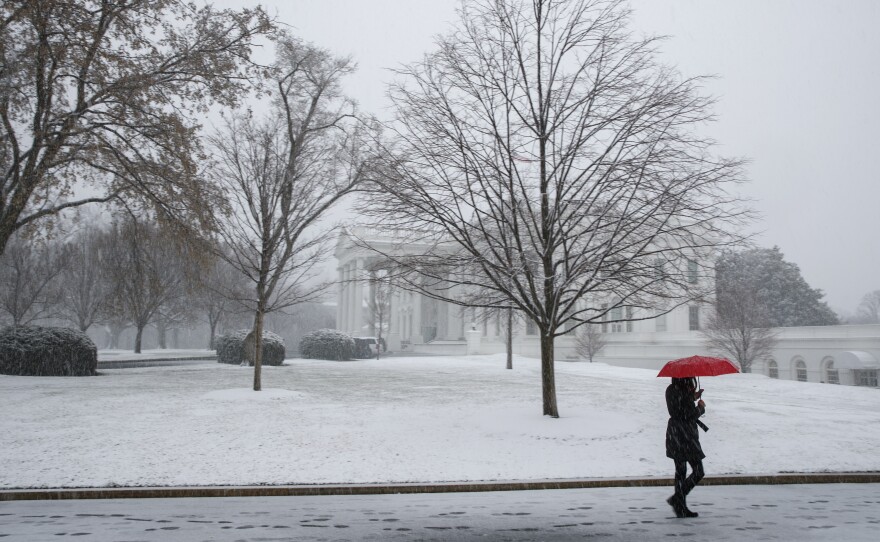No matter the adage or that the calendar tells us spring has sprung, March is still roaring like a lion on both sides of the country. On Wednesday the West Coast braced for potential mudslides and flooding following heavy rain as much of the East Coast dealt with a major snowstorm.
Southern California was on alert as thousands of people evacuated their homes Wednesday. Heavy rain combined with denuded land and loosened soil from recent wildfires made for a dangerous mix.
A flash flood watch was in effect for the region into Thursday and forecasters called for several inches of rain from "a large and powerful storm system," with warnings that debris flow was likely.
In Los Angeles, the Fire Department was offering free sandbags and urging residents to remain alert. Officials called for evacuations beginning 6 p.m. local time.
Mudslides have already been a scourge in nearby Santa Barbara and Ventura counties, where the Thomas Fire was contained earlier this year. The state's largest wildfire on record burned for weeks, ravaging hillsides and leading to January's deadly mudslides.
On Tuesday, officials in Santa Barbara County ordered a mandatory evacuation for residents in "extreme risk areas."
But Rob Lewin, director of the Santa Barbara County Office of Emergency Management, said in a statement that the amount and intensity of the latest expected rain was enough to cause flooding, even without the recent fires.
"We could experience localized flooding and road closures which are not isolated to the burn areas," Lewin said. "The threat of rockfalls, mudslides and debris flow is high.
For some people, it is the sixth evacuation since December, reports The Los Angeles Times.
"I've gotten to the point where I just leave all my important documents in a zip-lock bag, ready to take at a moment's notice," said Montecito resident Ashley Mayfield told the newspaper.
Ventura County officials ordered evacuations as well, opened shelters and shut down schools.
On the other coast, from the Mid-Atlantic through the Boston area, a nor'easter Wednesday brought heavy, wet snow and canceled flights, schools and work across the region.
The National Weather Service issued a winter storm warning into Thursday, saying significant snow, sleet and ice (some areas could see up to a foot-and-a-half) would make "travel very hazardous or impossible."
Parts of West Virginia and Kentucky were also expecting up to a foot of snow.
Thousands of flights were canceled or delayed Wednesday. New York's LaGuardia Airport said "nearly all" flight activity was suspended after noon on Wednesday.
Airports advised travelers to check on their flight status before heading to the airport.
Amtrak train service in the region was disrupted or canceled.
The federal offices in Washington, D.C., and New York City's public schools were among those calling a snow day Wednesday.
The nor'easter was the fourth major storm to hit the region in less than a month.
New Jersey Gov. Phil Murphy took pre-emptive steps, declaring a state of emergency on Tuesday in order to ready emergency workers for "round-the-clock operations."
"We saw in the last couple of storms the biggest shortfall was the performance by the utilities," Murphy said at a press conference Tuesday. This time around, hundreds of utility workers were coming in from out of state to help, Murphy said.
Earlier this month, a storm known as a "bomb cyclone," owing to its rapid intensification, brought heavy winds to the East Coast, downing power lines and tree limbs, leaving around 2 million people without power, and killing several.
Copyright 2018 NPR. To see more, visit http://www.npr.org/.






